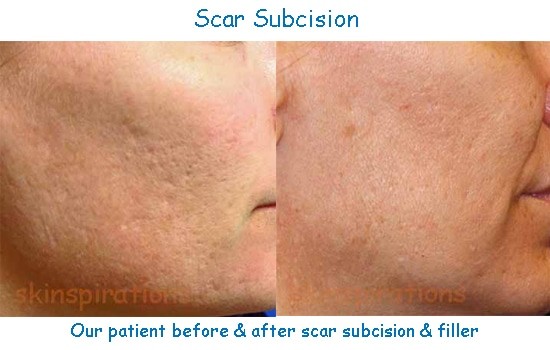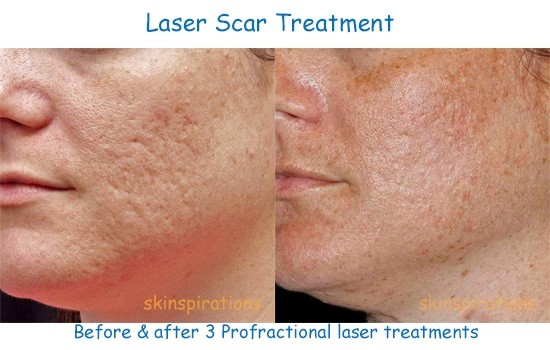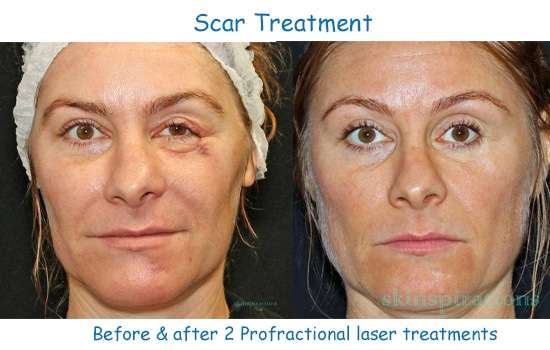Specific Types of Scars Require Specific Treatments
Anyone with visible scars knows how debilitating they can be but with the technology & expertise provided by the clinicians at Skinspirations, most scars can be improved.
Available scar treatments include fractional ablative laser treatments, intense pulsed light (IPL), subcision (loosening the scar tissue under the skin that is pulling it inward), dermal filler, microneedling, and injections of medications. Often a combination of these treatments provides the best results and the choice of treatments depends on the scar type.
How do you know what treatment is best for your scars? Answer the following questions to learn the best treatment options.
Does a depressed scar look smooth when stretched to the sides?
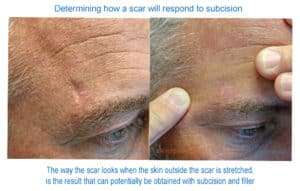
If a scar disappears when you pull the skin on either side of it outwards, then the indentation is due to scar tissue under the skin's surface that is pulling it inward. This type of scar is called a rolling scar.
Unless the fibers that attach the depressed area of skin to the muscle underneath are released, the indentation will remain no matter what types of surface treatments are performed.
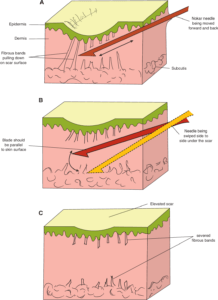
Subcision is the treatment that cuts the fibrous tethers pulling the scar down. It's performed by using a needle or cannula under the skin to break up the fibrous bands. Once they're broken, the scar becomes level with the surrounding skin and the depression disappears.
Blood acts like glue so a dermal filler injected after the fibers are cut helps keep the skin from reattaching down on the muscle.
Does the scar look indented even when the skin on each side is stretched outwards?
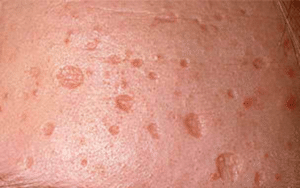 Scars that do not appear improved by stretching them apart, like icepick, boxcar, surgical, and stretch marks, are due to defects in the surface of the skin, so they need a procedure that treats the skin's surface.
Scars that do not appear improved by stretching them apart, like icepick, boxcar, surgical, and stretch marks, are due to defects in the surface of the skin, so they need a procedure that treats the skin's surface.
For scars like these with indentations, fractionated ablative laser treatments provide the most improvement, and less aggressive treatments like microneedling or microinfusion skin stamping can soften the scars' appearance.
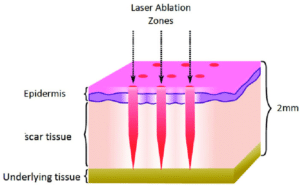 Fractionated ablative lasers such as our Profractional laser, vaporize columns of fibrous scar tissue which are replaced with normal, soft, healthy skin that is level with the surrounding surface. Only a percentage of the scar can be removed with each treatment or the treatment itself could cause scarring. Most people see an average of about 20% improvement after each session.
Fractionated ablative lasers such as our Profractional laser, vaporize columns of fibrous scar tissue which are replaced with normal, soft, healthy skin that is level with the surrounding surface. Only a percentage of the scar can be removed with each treatment or the treatment itself could cause scarring. Most people see an average of about 20% improvement after each session.
Is the scar thicker & elevated above the level of the surrounding skin?
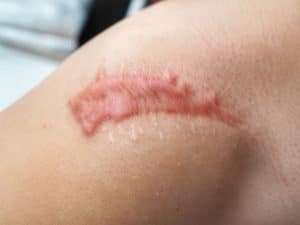 Hypertrophic scars are those that become thick and raised. They're caused by deep burns or incisions and are more likely to form if they're located in areas of pulling, like over a joint or around the eyes and mouth. Other risk factors for forming hypertrophic or keloid scars are darker skin types and age under thirty.
Hypertrophic scars are those that become thick and raised. They're caused by deep burns or incisions and are more likely to form if they're located in areas of pulling, like over a joint or around the eyes and mouth. Other risk factors for forming hypertrophic or keloid scars are darker skin types and age under thirty.
When the scars are elevated more than a couple of millimeters above the surrounding skin, a series of injections of a medication called 5-fluorouracil (5-FU), will help to flatten them. It can also be painted over the skin during a Profractional treatment where it will be carried down into each of the vaporized columns.
Surprisingly, a small amount of Botox injected around the perimeter of the scar will also help reduce any overgrowth of the scar.
Is the color of the scar different from the surrounding normal skin color?
It isn't uncommon for the color of a scar to be either darker (hyperpigmented) or lighter (hypopigmented) than the surrounding skin, or remain reddened for long periods. Hyperpigmentation or persistent redness can make scars more noticeable and often, improving the color makes the scar itself almost imperceptible.
Hyperpigmentation can usually be improved with prescription skin products, IPL treatments, and/or chemical peels. Persistent redness usually responds well to IPL treatments.
Hypopigmentation is more difficult to improve but treatments with fractionated ablative lasers like our ProFractional are sometimes successful in restoring normal color where the pigment had been lost.
Has the scar contracted so that it's pulling on the skin?
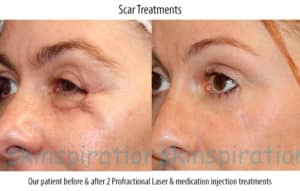 Scar contractures occur in the final phase of wound healing and tend to form where there is mechanical tension. Because the scar tissue is tighter than normal skin it can limit movement or cause discomfort.
Scar contractures occur in the final phase of wound healing and tend to form where there is mechanical tension. Because the scar tissue is tighter than normal skin it can limit movement or cause discomfort.
A Scar Patient of Mine With a Happy Ending
This lovely woman seen here had suffered severe facial bone fractures around her eye that required surgery to stabilize. The surgical scars contracted over the next few months until she could barely open that eye and her peripheral vision was limited. This affected her balance, her work as a clinician, and the first impression she made both socially and professionally.
She had consultations with plastic & ophthalmic surgeons who told her that there was nothing they could do to improve the scars because new incisions would cause even more scarring. Because she knew I use ablative lasers frequently on scars and she understood how they work, she was willing to try the scar treatment I recommended.
After protecting her eye by inserting what looks like a metal contact lens, I used an ablative erbium laser to cut the fibrous scar bands that were pulling her outer lids together, followed by a fractionated ablative laser to replace a percentage of the hard, contracted scar with normal stretchable skin. I injected the treated areas of the scar after the treatments with a medication to help prevent the scar from re-contracting. We repeated the fractionated laser treatment a month later.
It was one of the most gratifying results I've experienced when I saw her again a few months later. She'd had no other treatments and her scars were almost imperceptible. Improving scars really can change someone's life.
Fractionated ablative laser treatments with lasers like our Profractional can restore normal movement, decrease pain, and improve the appearance of contracted scars.
Combination Therapies for Scars
Many people with acne scars have a combination of boxcar, rolling, and ice pick scars, so they may need a combination of treatment types to see improvement in all of the scars. Many scars also have persistent redness so it's not uncommon to use IPL treatments along with other treatment modalities.
If you'd like our opinion on the best strategy for your scars, contact us for a complimentary consultation by registering online here or by calling 727-571-1923.




